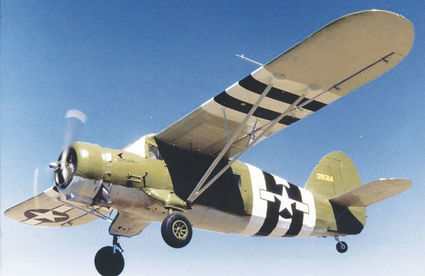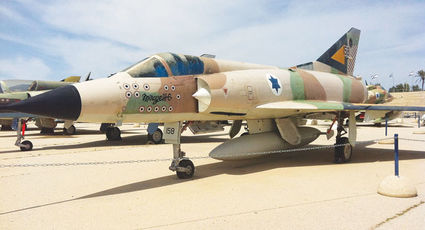Two dates in June that changed history!
Short Flights
There are two important dates in the month of June that changed world history. June 6, 1944 D-Day, the Invasion at Normandy, France and June 5-10, 1967, The Six Day War when Israel launched Operation Focus and defeated their enemies.
June 6 will mark the seventy-third anniversary of the Allied invasion of France's Normandy beaches to free Europe from Hitler's hold.
In the earliest hours of the beach landings, one in every two men was wounded or killed. Some of them spent an hour in the water trying just to make it to shore, all of them easy targets. The victory of the Allies was based on the individual decisions of thousands. Out of courage or simple duty, they offered themselves on freedom's altar. Their stories are what we remember and what we need to honor.
A Noorduyn Norseman UC-64 was the first plane on the beach after the Normandy invasion on June 6, 1944. All Allied aircraft carried large white invasion stripes during the D-Day Invasion in WWII.
We bought a Norseman in 1986 for a trade with the Air Force Museum and painted it with military olive drab with invasion stripes. This photo of the Norseman in flight was taken by world famous aviation photographer Michael O'Leary.
I remember how big the Norseman was, similar to an AN-2 in size and able to carry up to 10 passengers or 2,500 pounds of supplies. It is a single-engine utility transport manufactured by the Noorduyn Aviation, Ltd., Montreal, Canada and was first flown in 1935. The Norseman was designed for rugged Canadian bush country operations and could be equipped with wheels, floats, or skis. It was the first aircraft that was exclusively Canadian designed, built and sold around the world.
Robert B. C. Noorduyn was born in Holland, on 6 April 1893, and received his engineering education in Holland and Germany. In 1913, he went to England, learned to fly and worked in the engineering drafting department with Sopwith Aviation, Ltd. In 1919 he returned to Holland to work for Anthony Fokker.
There are only a handful flying UC-64's of the over 900 airplanes built from 1935 to 1959. Over 70-years of flying hasn't deterred this aircraft's history and it is still well known and respected in the North Country. It is powered with a 600-horse Pratt & Whitney R1340 radial piston engine, the same engine as was on the deHavilland Otter. The Norseman has a wingspan of 51-feet, 6-inches, fuselage length of 32-feet and a height of 10-feet, 3-inches. It cruises at about 148 miles per hour with a range of 1550 miles.
This year marks the 50th anniversary of The Six Day War when Israel mobilized to fight off an invasion from Egypt and Syria. In late May 1967, Egyptian President Nasser wanted to bring the Arab Middle East under his domination. He announced the straits of Tiran would be closed to Israeli vessels and then mobilized forces along its border with Israel.
On June 5, Israel launched a series of preemptive airstrikes. The Israeli Air Force launched a devastating surprise attack against Egyptian airfields which destroyed virtually the entire Arab air force, including those in Egypt, Jordan and Syria - all in under three hours.
The Israelis had flown as low as six feet over the Mediterranean for almost seventy miles at over the speed of sound to avoid radar detection. It was an incredible feat of piloting expertise.
Operation Focus was mainly conducted using the French built Dassault Mirage III, but the little twin engine jet trainer Fouga CM-170 Magister Israel proved its combat worth during the Six Day War when the Magister flew ground attack missions in Egypt and Jordan. They flew deception, interdiction and close air support missions. The trainer was fitted with two 7.5mm machine guns, air-to-ground missiles and bombs.
There were 44 aircraft and 42 pilots on hand on the morning of June 5, when Israel launched Operation Focus, the strike that started the war. While the 147 Squadron's Fougas were initially slated to participate in attacks on the Egyptian air bases at El Arish and Jabl Libni, their light armament and lack of effective combat range led to their reassignment.
The 147 Squadron's Fougas were effectively the only attack aircraft available to provide support for Israeli Defense Force ground forces. They subsequently attacked Egyptian artillery in the northern Sinai, convoys, supply trains and troop concentrations. The 147 Squadron was also active on other fronts, and late on June 5 the Fougas went into action against the Jordanians in the West Bank. Several aircraft struck Jordanian artillery that had been shelling various points in Israel.
The squadron claimed 128 tanks destroyed during the war, 43 other armored vehicles, 292 trucks, 2 trains, 47 artillery pieces, and 4 anti-aircraft guns. 419 sorties had been flown and 4,384 rockets expended. Slow, lightly armed, lacking both defensive armor and ejection seats, six Magister's and their pilots had been lost, including both the squadron leader and his deputy. Virtually every single aircraft suffered battle damage.
There are a number of Fouga CM-170 Magister's in the U.S. and my husband Al has one. It is graceful in the air and fun to fly!
See you on our next flight!






